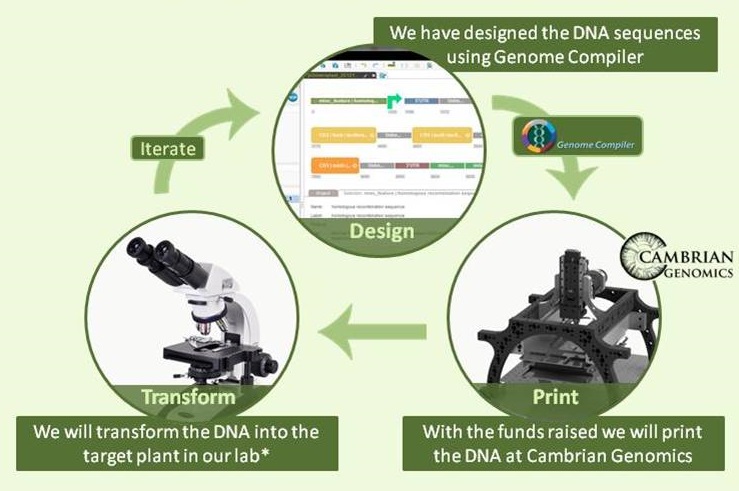The Case for Crowdfunding
When starting a venture, “getting out of the building” and one’s comfort zone is a crucial step. The idea is to showcase a “minimum viable product” at the earliest possible moment to verify if “customers have a significant problem worth solving.” (see “The Lean Startup” by Ries).

Increasingly, “getting out of the building” for entrepreneurial ventures also means using the Internet as a way to showcase one’s ideas. In the last few years, crowdfunding websites like Kickstarter or Indiegogo have systematized this process as they allow entrepreneurs to list their projects online. A major benefit for the ventures is the opportunity to secure early stage funds (i.e., pledges) without having to rely on venture capital or other early stage financing typically sought by entrepreneurs.
By revealing their ideas, entrepreneurs receive early feedback to validate their initial assumption about the product. They can track initial interest (views of the project), customer engagement (e.g., visitors leaving a comment or playing a video) as well as a sense for actual demand (pledges). These data help entrepreneurs make decisions about their product and their venture. For example, a project that has received few visits and pledges may need adjustments and, in the extreme case, the entrepreneur may not commit further time and money to the idea.

Conversely, a project which has stirred curiosity and interest suggests that the entrepreneur is on the right track. As an example Pebble’s watch on Kickstarter was 100 times overfunded ($10 million and had thousands of user comments. Listing an initial product idea online can also be a way to attract beta-testers and demonstrate initial “sales” (in the form of pledges). Taken together, getting “out of the building and into the web” may be an important vehicle through which entrepreneurs move their products towards proof of concept and ultimate success.
A Pre-Requisite for Crowdfunding: Revealing the Idea Online
Posting ideas and products on a website at an early stage exposes the venture to the risk that the product or idea could be imitated or copied. Crowdfunding websites allow participants to browse the projects anonymously; it is not always possible to determine who actually looks at the idea. A larger number of visits or overfunding of a project signals strong interest but, at the same time, attracts imitators . This is the dilemma inherent to “getting out of the building”: measuring customer responses requires the entrepreneur to reveal potentially sensitive information and this problem is amplified in an online context.
There are factors that mitigate the concerns intrinsic to online disclosure. Crowdfunding projects tend to already have some form of prototype or to have at least embedded a technology within a product. This suggests timing and execution advantages for the venture. Legally, a provisional patent may also solve the issue of revealing information on crowdfunding websites .
Technology Entrepreneurship and Crowdfunding
Currently, the most successful crowdfunding websites cover a broad range of categories (e.g., music, games, theatre). However (and unfortunately), technology-based ventures and industries in which NDAs (nondisclosure agreements) are the norm seem to be underserved. This is reflected in Kickstarter’s FAQs:
Technology-based projects on Kickstarter only make up about 3.7% of all projects (as a percentage of all projects for which funding ended in 2013). One important reason is that quite a few technology-based categories (e.g., health products or e-commerce/social network apps) are excluded.“Being open and sharing ideas is an essential part of Kickstarter. The platform is collaborative by nature, and is a powerful community-building tool for project creators. If you are unwilling to share information about your project with potential backers then Kickstarter probably isn’t for you.”

Another reason is that the social nature of crowdfunding can have side-effects. An interesting case is the biotechnology project “Glowing Plants” which was listed on the site and aimed to fund a naturally glowing plant as a source of light. While in 2013, the project exceeded its target of $65,000 by over $400,000, it also encountered severe resistance as it genetically modified an organism. Promising such an organism as a reward is now forbidden on Kickstarter.
Finally, current crowdfunding websites are open communities and predominantly geared towards the end users. Many technology-based projects, however, would need corporate partners for funding and to help with the development of the idea. The problem is exacerbated as technology- based ventures often take more time and money to develop.
A Space for Tech Ventures
 Over the last year, alternatives have emerged that try to fill the above-mentioned void. Given the restrictions of crowdfunding websites in the area of healthcare, Medstartr was launched in 2012 as a crowdfunding platform specifically focused on that sector. Interestingly, major sources of funds from Medstartr do not come from the online community (i.e., crowdfunding) but from offline sources (suggesting that pharmaceutical or device companies could be involved). For very early stage discoveries, new ways for scientists to fund projects have emerged. For example, experiment (formerly Microyza) is a dedicated crowdfunding site through which pledges can be made to fund university research and inventions. It will be interesting to see if such sites will inspire scientists to embrace the spirit of entrepreneurship by “getting out of the ivory tower.”
Over the last year, alternatives have emerged that try to fill the above-mentioned void. Given the restrictions of crowdfunding websites in the area of healthcare, Medstartr was launched in 2012 as a crowdfunding platform specifically focused on that sector. Interestingly, major sources of funds from Medstartr do not come from the online community (i.e., crowdfunding) but from offline sources (suggesting that pharmaceutical or device companies could be involved). For very early stage discoveries, new ways for scientists to fund projects have emerged. For example, experiment (formerly Microyza) is a dedicated crowdfunding site through which pledges can be made to fund university research and inventions. It will be interesting to see if such sites will inspire scientists to embrace the spirit of entrepreneurship by “getting out of the ivory tower.”

